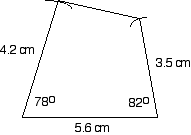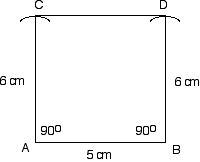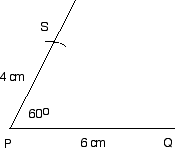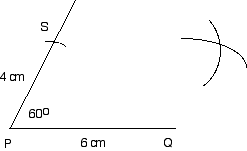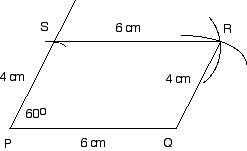Types of Diagrams
|
A sketch is a rough diagram which does not have to be too accurate.
A drawing is more accurate and can be drawn using a ruler and a protractor for measuring lengths and angles.
A construction in mathematics is an accurate drawing done usually using only instruments such as a ruler as a straight edge and a pair of compasses.
When drawing a construction, leave all of your construction arcs and lines.
.
|
|
Construction of Quadrilaterals
Quadrilaterals are four-sided polygons. Types of quadrilaterals include squares, rectangles and parallelograms.
To be able to construct quadrilaterals, certain information is needed about the sizes of the angles and sides of the shape.
The instruments used for constructions, which include ruler, compasses and protractors are described in Topic 29 ,"What is Geometry?".
Some of the types of constructions of quadrilaterals are described below:
| Construct a rectangle with sides of 5 cm and 6 cm. |
|
Step 1: Measure a 5 cm line AB with a ruler.
Step 2: Make a right angle at A.
Step 3: Draw an arc, centre A, length 6 cm, mark point C.
Step 4: Make a right angle at B.
Step 5: Draw an arc, centre B, length 6 cm, mark point D.
Step 6: Join C and D
|
|
| Construct a parallelogram PQRS with a base PQ of 6 cm an angle of 60o and the other side of 4 cm. |
|
Step 1
Measure the base side, PQ, 6 cm long, with ruler.
|
|
|
Step 2
Make an angle of 60o at P.
|
|
Step 3
Draw an arc, centre P, radius 4 cm, mark point S. |
|
|
Step 4
Draw an arc, centre S, radius 6 cm.
Draw an arc, centre Q, radius 4 cm.
|
|
|
Step 5
Where the arcs intersect is point R.
Join PQRS.
|
|
|
